During the holiday season plaid and checkered patterns spring up all around you. You can find dozens of these patterns, from a bold Buffalo Check to an intricate Madras Plaid! To find the right design for you, learn the different plaid and checkered pattern names.
Plaid and checkered designs have printed or woven intersecting vertical and horizontal lines. Plaid patterns contain complex and varied vertical and horizontal stripes in many colors. Checkered patterns contain symmetrical, repeating patterns, usually in only two colors.
In this article, you will learn the names of the most popular checkered and plaid designs. In addition, you will learn the history of Scottish tartan plaids. Finally, you will find out what a checkered aesthetic looks like.
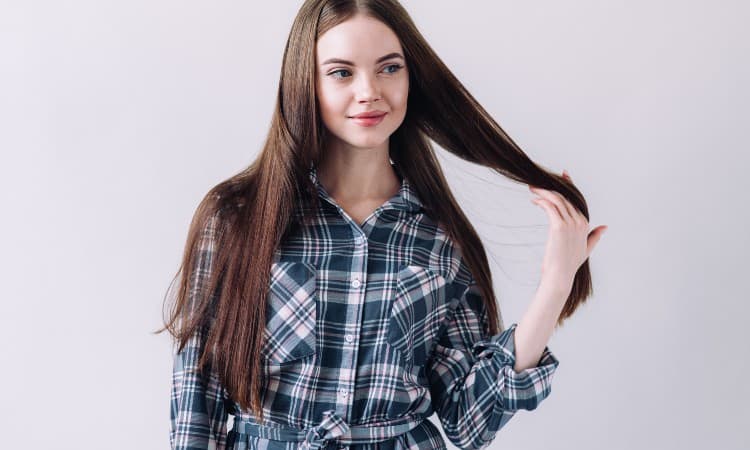
What is a Checkered Pattern?
 A checkered pattern contains symmetrical crossed vertical and horizontal lines. This pattern may contain more than two colors, but in this case, the color pattern will also repeat symmetrically. You will find a few exceptions, like the slanted diamond squares of an Argyle check, but most checkered fabrics will have that regular checkerboard appearance.
A checkered pattern contains symmetrical crossed vertical and horizontal lines. This pattern may contain more than two colors, but in this case, the color pattern will also repeat symmetrically. You will find a few exceptions, like the slanted diamond squares of an Argyle check, but most checkered fabrics will have that regular checkerboard appearance.
Checkered designs can come in a range of pattern sizes, though. Designs like gingham or the houndstooth pattern you can find in wool suits or coats can have a tiny, delicate series of repeating squares. But more modern variations, including a buffalo check, often come in quite large squares!
These patterns come in a surprising number of variations, considering the simple checkerboard nature of the basic design! Check patterns see a lot of use in suiting, but also remain popular for clothing such as dresses and women’s blouses.
What is a Plaid Pattern?
 A plaid pattern contains crisscrossing vertical and horizontal lines of varying widths. Traditionally, this intricate design is woven into the fabric, but in modern times, cheaper plaids may also use printed designs. This type of design originated in Scotland as Tartan plaids that helped distinguish clan heritage.
A plaid pattern contains crisscrossing vertical and horizontal lines of varying widths. Traditionally, this intricate design is woven into the fabric, but in modern times, cheaper plaids may also use printed designs. This type of design originated in Scotland as Tartan plaids that helped distinguish clan heritage.
Unlike checks with an even, repeating series of squares, plaids often feature lines of many different widths and colors, creating a more complex design. Plaid designs have broad symmetry because each sett in the design does repeat but will not have the neat, symmetrical checkerboard look because all the bands of color vary in width.
Plaid as we know it today was first used in Scotland in the 1700s and became something of a national symbol when the invading English attempted to ban Scottish people from wearing it. The word plaid even comes from a Gaelic word for a blanket!
Today, many Scottish clans have their own unique tartan plaid designs in kilts and other ceremonial clothing. Some of these designs have attained mass popularity, such as the Black Watch plaid.
Popular Checkered Pattern Names
Every specific checkered design has its own name and history. However, the popularity of checkered patterns over such a long time indicates that people like the comforting, repeating nature of this kind of design. The popularity of checks has led to many different kinds of designs emerging over the past couple hundred years.
For example, the unique diagonal checks of the diamond-shaped check pattern is called argyle. Here you can find a quick overview of the most popular checkered designs!
Buffalo
 Often referred to under the misnomer of “buffalo plaid,” this basic red and black check design features bold, repeating squares formed by crossing red and black stripes of fabric. Most of the time, you will find this design made out of flannel. Flannel can contain cotton or synthetic fibers but always has at least one soft, velvety side created by brushing the fabric with metal bristles.
Often referred to under the misnomer of “buffalo plaid,” this basic red and black check design features bold, repeating squares formed by crossing red and black stripes of fabric. Most of the time, you will find this design made out of flannel. Flannel can contain cotton or synthetic fibers but always has at least one soft, velvety side created by brushing the fabric with metal bristles.
The bold, large squares of this classic American design probably became popular when PR folks tried to make the logging industry look cool by promoting lumberjacks as a symbol of American strength and independence. Obviously, the campaign worked because buffalo plaid remains popular today!
Argyle
 You may not think of a checkerboard when you see the diagonal squares of a classic Argyle checkered pattern. Still, this design remains one of the most enduringly popular types of checks in the fashion industry. This type of check design features diagonal stripes of color that create diamond shapes in the material, often overlaid with narrow diagonal lines in another color that create an overlay of another set of diamond shapes.
You may not think of a checkerboard when you see the diagonal squares of a classic Argyle checkered pattern. Still, this design remains one of the most enduringly popular types of checks in the fashion industry. This type of check design features diagonal stripes of color that create diamond shapes in the material, often overlaid with narrow diagonal lines in another color that create an overlay of another set of diamond shapes.
You could argue that this symmetrical lozenge pattern belongs to the plaid category, as it originated in Clan Argyll in Scotland! Today you will most often find this check design in men’s sweaters and dress socks, though modern fashion also makes it a popular choice for women’s sweater vests.
Checkerboard
 A checkerboard design offers the most basic checked pattern of all, simply contrasting squares in two colors in a regular checkerboard design. Today, the design will probably come printed onto the fabric in eye-smarting hues of pink and green or red and grey, among many other color combinations. In the past, this design might have used a twill weave with two colors of threads to create simple squares of contrasting colors.
A checkerboard design offers the most basic checked pattern of all, simply contrasting squares in two colors in a regular checkerboard design. Today, the design will probably come printed onto the fabric in eye-smarting hues of pink and green or red and grey, among many other color combinations. In the past, this design might have used a twill weave with two colors of threads to create simple squares of contrasting colors.
This bold design tends to swing in and out of popularity in the fashion world. You will sometimes find sweaters or tennis skirts in this pattern today.
Ichimatsu
 Ichimatsu checks, or an ichimatsu moyo design, look a lot like a checkerboard design. This style of alternating squares of color originated in the Japanese kimono and has a long history. Originally, this pattern was called “stone pavement” in Japanese to describe its regular pattern.
Ichimatsu checks, or an ichimatsu moyo design, look a lot like a checkerboard design. This style of alternating squares of color originated in the Japanese kimono and has a long history. Originally, this pattern was called “stone pavement” in Japanese to describe its regular pattern.
A famous Japanese Kabuki actor made the pattern popular for kimonos. Today, the pattern represents prosperity because of its endlessly repeating squares. So you can imagine a bank account full of endlessly accumulating dollars if you choose to wear this design!
Windowpane
 A windowpane check looks quite different from the solid squares in many checkered designs, as the windowpane pattern features thin lines creating boxes set against a solid-colored background. This looks like the old-fashioned lead inserts that used to hold window pane glass together, leading to the name of the design.
A windowpane check looks quite different from the solid squares in many checkered designs, as the windowpane pattern features thin lines creating boxes set against a solid-colored background. This looks like the old-fashioned lead inserts that used to hold window pane glass together, leading to the name of the design.
Windowpane checks have a more delicate, sophisticated appearance than some of the more whimsical checkered designs. For this reason, windowpane checks remain popular for elegant suits and jackets today.
Black and White Checkered Patterns
While you can find any of these patterns in many colors, certain checkered designs are most popular in basic black and white. These include the houndstooth, shepherd’s check, and tattersall check designs.
Houndstooth
No products found.A houndstooth checkered pattern has a truly unique staggered square design created by intersecting different colors of warp and weft threads in a twill weave pattern. Though you can find a houndstooth design woven out of colorful threads, it shows up most often in a classy black and white. It gets its name because the staggered squares have the jagged shape of a dog’s canine teeth.This pattern has remained popular for suits and jackets for a long, long time. Christian Dior used it in one of his famous early fashion shows, for example! Today you can find it in wool coats, suits, and men’s and women’s dress wear.
Shepherd’s Check
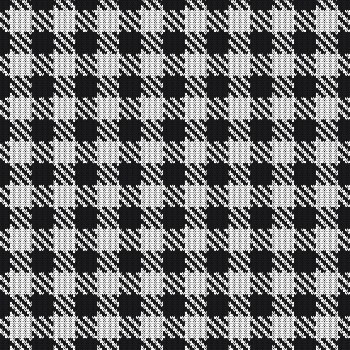 Shepherd’s check looks very much like a regular checkerboard design featuring even squares in two colors, usually black and white. However, this design always uses a twill weave that creates cool two-toned squares within the design. Shepherd’s check usually has very small squares, unlike the basic checkerboard, which can have quite large squares.
Shepherd’s check looks very much like a regular checkerboard design featuring even squares in two colors, usually black and white. However, this design always uses a twill weave that creates cool two-toned squares within the design. Shepherd’s check usually has very small squares, unlike the basic checkerboard, which can have quite large squares.
Black and white twill-weave shepherd’s check designs don’t have the massive popularity of the houndstooth design, but you can find this pattern in flannel shirts, scarves, and some cozy outerwear as well.
Tattersall Check
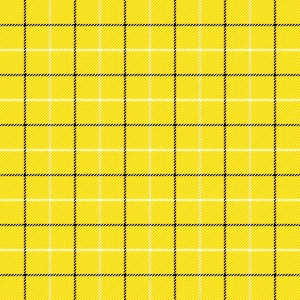 A tattersall check looks like a windowpane design except that it takes two sets of thin squares and superimposes the designs on top of each other. These thin squares usually get woven into the fabric rather than using a printing method to create the design. You can find this design in classic white and black, or in springtime pastels, or several other colorful designs.
A tattersall check looks like a windowpane design except that it takes two sets of thin squares and superimposes the designs on top of each other. These thin squares usually get woven into the fabric rather than using a printing method to create the design. You can find this design in classic white and black, or in springtime pastels, or several other colorful designs.
Interestingly, this type of checked design originated in a horse market in an English neighborhood called Tattersall. The horse sellers would use special blankets for their horses woven in a “tattersall” design! Today, you will most often find this design in suits, jackets, and some sweaters.
Small Checkered Pattern
Certain checkered patterns typically feature small checks rather than large squares like a Buffalo design. These include mini and pin checks as well as most ginghams and graph checks.
Dupplin
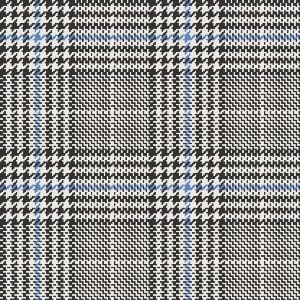 A Dupplin check features a complex design containing a windowpane check overlaid on top of another kind of check, such as a checkerboard or a houndstooth check. You can find this in a variety of colors. It usually creates a casual and less formal kind of design.
A Dupplin check features a complex design containing a windowpane check overlaid on top of another kind of check, such as a checkerboard or a houndstooth check. You can find this in a variety of colors. It usually creates a casual and less formal kind of design.
There is a famous Dupplin castle in Scotland, suggesting that this pattern may have its origins in some type of Scottish tartan plaid. Today, you will most often find this intricate checked design in casual flannel or cotton shirts.
Gingham
 Gingham is a type of material rather than simply a type of checked design. Its iconic American checkered pattern, traditionally in pastel colors like blue, pink, or red, is classified as a checkered design, though! You can find gingham fabric with squares in many sizes today, but its classic tiny squares still remain popular.
Gingham is a type of material rather than simply a type of checked design. Its iconic American checkered pattern, traditionally in pastel colors like blue, pink, or red, is classified as a checkered design, though! You can find gingham fabric with squares in many sizes today, but its classic tiny squares still remain popular.
Gingham always contains either lightweight cotton or a cotton blend material. It rose to prominence during the massive cotton industry that dominated the Southern United States before the Civil War, and it remains popular today because of its cheery, bright appearance.
Glen Check
No products found.You will also find the Glen check design referred to as a Glen plaid due to the complexity of the contrasting squares of different types of checks in this design. Essentially the design creates a sett (a section of a plaid design) that contains multiple squares full of a certain type of check, such as a houndstooth check.This fancy design shows up today in some suiting material, though it was most popular when the Prince of Wales wore it in several iconic appearances.
Typically you will find a Glen Check design in muted black and white or greys, rather than a more vivid color scheme.
Graph Check
 A graph check design is a tiny version of windowpane checks. It contains thin, delicate lines forming squares set against a solid-colored background. It looks like graph paper, so you can imagine where it got its name!
A graph check design is a tiny version of windowpane checks. It contains thin, delicate lines forming squares set against a solid-colored background. It looks like graph paper, so you can imagine where it got its name!
This almost invisible design can look sophisticated in an elegant suiting material or offer a nice basic texture to offset a more casual pair of jeans. Unfortunately, this particular design does not have a unique history and seems to have developed as a modern fashion trend based on the more traditional windowpane check design. You can find it today in everything from women’s dresses to men’s button-down shirts.
Mini Check
 Mini check serves as a catch-all term for any tiny checkered pattern, such as tiny gingham or checkerboard designs. These often come in bright or pastel colors and offer a casual, uplifting style popular in skirts and shirts.
Mini check serves as a catch-all term for any tiny checkered pattern, such as tiny gingham or checkerboard designs. These often come in bright or pastel colors and offer a casual, uplifting style popular in skirts and shirts.
If you want a specific type of material, you may search for a mini check wool, a mini check gingham, or a mini check flannel. The design may come featuring many houndstooth checks, windowpane checks, or basic gingham-style squares.
Pin Check
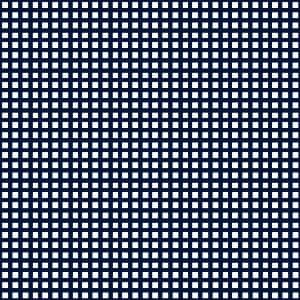 Pin check fabric contains such tiny squares that they look almost like the head of a sewing pin! From a distance, this fabric may look solid-colored because the tiny design will blend. The dot-sized squares in this fabric are so small that they are made from stripes of just one yarn crossing another yarn in the fabric.
Pin check fabric contains such tiny squares that they look almost like the head of a sewing pin! From a distance, this fabric may look solid-colored because the tiny design will blend. The dot-sized squares in this fabric are so small that they are made from stripes of just one yarn crossing another yarn in the fabric.
You will often find this elegant design used in shirts or even in suits. That said, don’t confuse this design with a pinstripe pattern–pin checks still have tiny squares, like all checked patterns!
Popular Plaid Pattern Names
You can find hundreds of different types of plaid patterns today, ranging from the traditional Scottish clan tartans to the American catch-all of any type of intersecting stripes. Some designers consider “plaid” as an overarching design that encompasses checks, gingham, and any other type of variegated stripes in a fabric.
That said, plaid developed first in Scotland in the highlands, and many of the well-recognized plaid patterns that remain popular today come straight from a specific Scottish clan.
Plaid designs do not have the regular symmetry of a checked design, but they contain repeating setts. A sett is like one complete section of the plaid design.
Glen Plaid
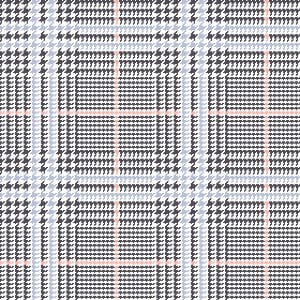 Also known as Glen Check design or the Prince of Wales plaid, this iconic design played a large role in bringing plaid into the world of high fashion. You could consider this pattern either a checked or plaid design, as it includes squares of checks and overlaid squares in a thin line of a contrasting color.
Also known as Glen Check design or the Prince of Wales plaid, this iconic design played a large role in bringing plaid into the world of high fashion. You could consider this pattern either a checked or plaid design, as it includes squares of checks and overlaid squares in a thin line of a contrasting color.
This design was officially registered by a Scottish weaver in 1840 but became famous when the Countess of Urqhart castle used the design woven in warm wool as a winter staff uniform. When King Edward VII was the prince of Wales, he saw the staff in their stylish uniforms and adopted the pattern for some of his own suits!
Madras Plaid
 Unlike most other forms of plaid, Madras plaid originated in India as a form of summery, lightweight cotton printed with fun designs. This fabric also had great popularity in the Philipines in the 1800s, where women used it to make cooling saya skirts and loose pants. Traditionally dyed with natural vegetables and plants to create faded, light colors, madras plaid today may contain more vivid stripes ad squares!
Unlike most other forms of plaid, Madras plaid originated in India as a form of summery, lightweight cotton printed with fun designs. This fabric also had great popularity in the Philipines in the 1800s, where women used it to make cooling saya skirts and loose pants. Traditionally dyed with natural vegetables and plants to create faded, light colors, madras plaid today may contain more vivid stripes ad squares!
Today, you often find Madras plaid in canvas shorts, summer shirts, beachwear, and even in summery sandals or shoes!
Burberry Plaid
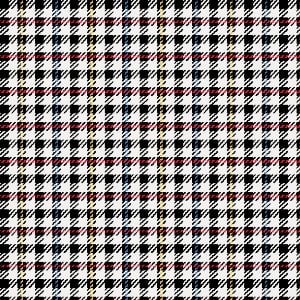 Burberry plaid, or Burberry check, features superimposed grids of thin squares over a tan background. The famous Burberry clothing company produced this design to sell a new line of wool coats in the 1920s. Burberry check became something of a status symbol by the 1990s, and the company made a huge amount of money selling it in everything from skirts to scarves.
Burberry plaid, or Burberry check, features superimposed grids of thin squares over a tan background. The famous Burberry clothing company produced this design to sell a new line of wool coats in the 1920s. Burberry check became something of a status symbol by the 1990s, and the company made a huge amount of money selling it in everything from skirts to scarves.
The company has significantly cut back its use of the Burberry check design today. That said, you can still find a huge amount of vintage Burberry check items for sale today!
Famous Plaid Patterns
Many plaid patterns have a special heritage or a loyal following, but a few can claim a uniquely famous status. The Royal Stuart and Black Watch plaids fall into the famous category, for example!
Royal Stewart
 First recorded way back in the 1830s, this colorful red and green tartan design has a long association with the royal house of Stewart. Today, this is the plaid design claimed by Queen Elizabeth II! It’s probably the most iconic of all tartan designs, featuring a vivid red background and intersecting blue, green, and yellow lines of varying thicknesses.
First recorded way back in the 1830s, this colorful red and green tartan design has a long association with the royal house of Stewart. Today, this is the plaid design claimed by Queen Elizabeth II! It’s probably the most iconic of all tartan designs, featuring a vivid red background and intersecting blue, green, and yellow lines of varying thicknesses.
In America, this particular tartan shows up a lot around the Christmas holidays. Technically this tartan belongs to the Queen of England, but in reality, people all around the world wear and enjoy its bright colors.
Black Watch
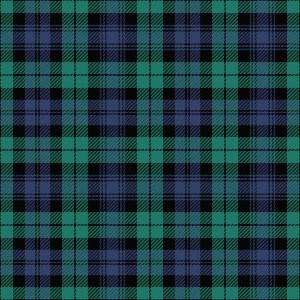 The Black Watch Tartan was developed for use in various Scottish military units that wore the distinctive plaid kilts to set themselves apart from other Scottish clans and organizations. In fact, various Scottish military units wore the Black Watch plaid for more than 250 years! This particular plaid features intersecting hunter green, navy blue, and black stripes of varying widths.
The Black Watch Tartan was developed for use in various Scottish military units that wore the distinctive plaid kilts to set themselves apart from other Scottish clans and organizations. In fact, various Scottish military units wore the Black Watch plaid for more than 250 years! This particular plaid features intersecting hunter green, navy blue, and black stripes of varying widths.
While the plaid has a fascinating history in its own right, it has great popularity today because of its universal appeal. For anyone who does not have a Scottish background, Black Watch is considered a universal design available to anyone who wants to wear a traditional plaid!
Scottish Plaid Names
Most plaids originated in Scotland and have Scottish names because most authentic tartan patterns developed as a unique marker for Scottish clans. Members of the clan could wear a kilt or plaid woven in this distinctive design to recognize each other no matter where they traveled.
Here you can find a quick overview of a few prominent terms and types of Scottish plaids.
Tartan
 The term “tartan” refers to any type of Scottish plaid or a woven pattern of intersecting horizontal and vertical lines to create grid shapes. You could refer to a clan’s unique plaid design as a “clan tartan.” The word tartan probably originated in the French word “Tartaine” which means checks.
The term “tartan” refers to any type of Scottish plaid or a woven pattern of intersecting horizontal and vertical lines to create grid shapes. You could refer to a clan’s unique plaid design as a “clan tartan.” The word tartan probably originated in the French word “Tartaine” which means checks.
The use of the term tartan gets a little confusing because in America, the word tartan often just means any kind of plaid design. You can find Christmas tartans, for example, if you want a skirt to go around the bottom of your Christmas tree!
For practical purposes, you can think of tartans in either generic or specific terms. You can find specific tartan designs that belong exclusively to various Scottish clans and should not be worn by anyone outside of that heritage. You can also just use the term tartan generically to refer to any plaid design.
Clan Wallace
 The Clan Wallace tartan comes in a Wallace Dress pattern featuring red and black or a Wallace Hunting design featuring greens and blues. This traditional plaid has strong similarities to the classic Rob Roy tartan and remains popular today because several key designers picked it up and mass-marketed it in the early 1900s.
The Clan Wallace tartan comes in a Wallace Dress pattern featuring red and black or a Wallace Hunting design featuring greens and blues. This traditional plaid has strong similarities to the classic Rob Roy tartan and remains popular today because several key designers picked it up and mass-marketed it in the early 1900s.
Of course, Clan Wallace also has profound historical significance in Scottish history, as anyone who has ever seen the movie Braveheart will know! But today, you see this clan tartan all over the place, even in the Scotch tape produced by 3M.
Balmoral
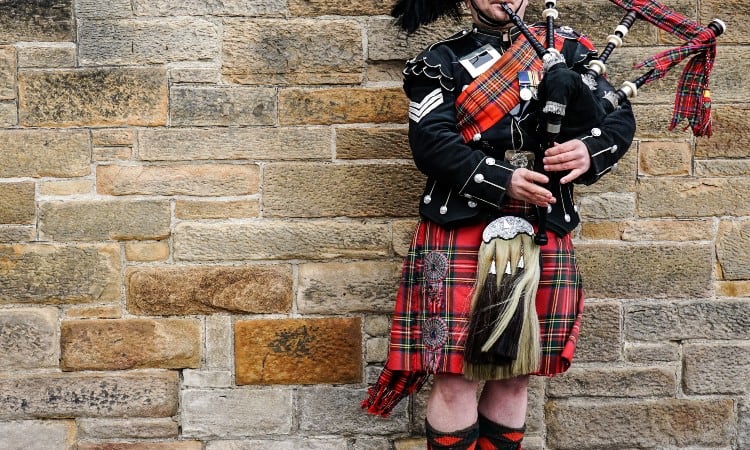
The Balmoral tartan has a distinctive bright red background, wide black stripes, and fine yellow and green lines worked into its plaid design. Prince Albert (husband of Queen Victoria) famously designed this plaid in 1853, and it has belonged to the British royal family ever since. Named after the royal family’s residence in Balmora, it supposedly resembles the streaked granite of Balmoral castle!
Today people should only wear this special plaid pattern with official permission from her Majesty. However, you can find quite similar designs easily available in many popular plaid clothing items!
Lindsay
 Clan Lindsay dates back to the 12th century in recorded Scottish history, though its official tartan did not go on record until the 1800s. This plaid contains a dark red background and blue stripes to create a varied series of squares. Like most clan tartans, it should technically only be worn by someone who has a connection to the clan.
Clan Lindsay dates back to the 12th century in recorded Scottish history, though its official tartan did not go on record until the 1800s. This plaid contains a dark red background and blue stripes to create a varied series of squares. Like most clan tartans, it should technically only be worn by someone who has a connection to the clan.
Partially due to the wide-reaching size of the clan today, this plaid remains popular and you can find online stores selling Clan Lindsay kilts and paraphernalia quite easily!
Plaid Vs Checkered
The main difference between checkered and plaid fabric designs is that checkered patterns are more symmetrical and simple than plaid patterns. Another big difference is the Scottish history related to the most authentic plaid patterns.
Sometimes the terms are used interchangeably, as in Buffalo plaid, which is technically a checkered pattern but shows up in “plaid” flannel shirts in popular culture.
In all honesty, you will find considerable crossover between what gets termed a checkered or plaid design. In some cases, designers argue that all designs are plaid designs, with checkered fabrics forming a subset of the plaid category.
Designs such as Madras plaid often get classified as a checkered pattern, while the windowpane checkered pattern sometimes shows up as a popular form as plaid as well!
The designs feature crisscrossing vertical and horizontal lines in the patterns, so you can expect a lot of similarity between plaid and checkered patterns. The distinction only matters if you want to understand the designs well enough to find a specific type of pattern to fit your needs.
Checkered Pattern Aesthetic
Retro styles emerging back into popularity have once again produced what some designers term a checkered pattern aesthetic. If you find yourself scrolling through gingham dresses or adding houndstooth throw pillows to your Amazon shopping cart, you may fall into the checkered aesthetic camp as well!
Trends come and go, sometimes in cycles, but it is true that plaids and checks have managed to remain popular in various forms for several hundred years. If you scope out your closet today, you undoubtedly have several checkered or plaid items hanging out in there!
If you want the whole aesthetic, or comprehensive look, you have to adopt a home decor or personal style that truly embraces checks. In this case, you may want to pair a houndstooth coat with windowpane checkered pants or update your dining room to include a buffalo plaid table runner!
Gingham Vs Plaid
Gingham is the type of cotton cloth featuring even squares in a checkered design, while plaid is a less symmetrical design containing stripes of varying widths. Gingham and plaid patterns share some similarities, as both designs feature colored stripes intersecting at right angles. A gingham design falls into the checkered category, as its regular squares make it too simple and symmetrical to look like a tartan plaid.
Gingham traditionally contains pre-dyed plain-weave cotton containing two colors: white and one other, such as red or blue. Think of Dorothy’s iconic blue and white dress from the Wizard of Oz.
Today, you will find gingham in many different types of fashion, such as dress shirts, skirts, and dresses.
Conclusion
Plaid and checkered designs share common characteristics like crossing vertical and horizontal stripes. That said, checks usually feature evenly spaced squares. Plaid designs contain less symmetrical designs using stripes of varying widths.
Most plaid designs originated in Scotland to distinguish Highland clans. Every plaid or checkered design has its own name and origin story. For instance, Balmoral tartan belongs to the Royal family of England, while the tattersall check pattern got its name from the horse blankets sold at a horse market long ago!
What is your favorite style of plaid or checked material? What do you like best about it? Leave a comment below to let us know!